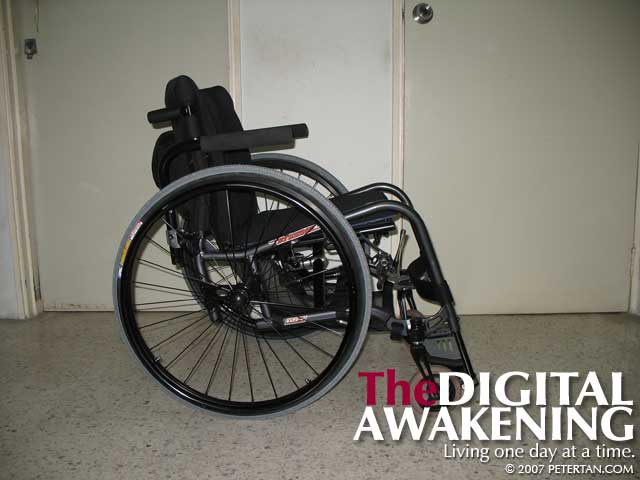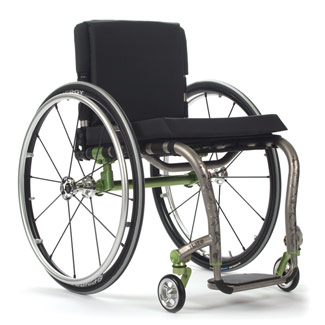It is five o’clock now. That means I have been sitting here for the past ten hours fussing over the specification for the TiLite ZRA Series 2. Having decided on the measurements, now I am juggling the parts list to get the best bang for the buck. There are expensive performance parts that are esoteric and lighter and there are cheaper standard parts.
Should I opt for the Spinergy Light Extreme (US$589) over the Spinergy Spox Everyday (US$485)? Should I go for 5 X 1″ or 5 X 1.5″ front casters? If 5 X 1″, I have to decide whether I want the standard plastic wheel with poly tire at no charge or should I pay US$148 for the Performance 5 Spoke 2-Piece Billet Aluminium Wheel with Softroll Tire? If 5 x 1.5″, should I go for the Frog Legs Epic Aluminium Softroll (US$83) or the Lexan Softroll (US$38.99)?
I am trying to put together a ride that is within my budget and at the same time lightest possible. A light chair is easier on the hands, arms and shoulders when pushing. A good-fitting one improves sitting posture and prevent backaches. It also reduces the risk of repetitive stress injury which I am already suffering from for overworking my weak fingers on the mouse buttons.
I guess I will be still be here configuring the parts for the next few days, switching one for another, until I am absolutely satisfied that the final specifications fulfill my needs. I have never realised that buying a wheelchair can be such a complicated affair and that one can be built to exact specifications according to the user’s requirements. In this area, I have a lot more to learn.


